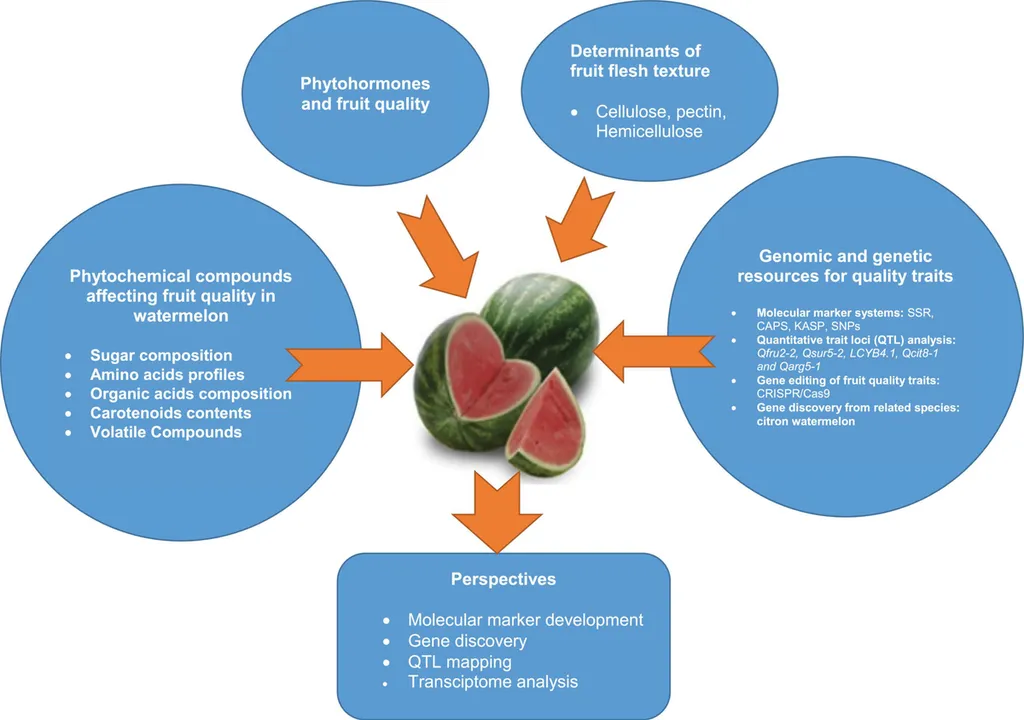In the quest to enhance the nutritional and sensory qualities of fruits, a team of researchers led by Hui Xue from the Agricultural Genomics Institute at Shenzhen, Chinese Academy of Agricultural Sciences, has made significant strides. Their work, published in the journal *Plant Communications* (which translates to “Plant Communications” in English), explores the intricate world of fruit metabolomes and how genomic design can revolutionize fruit quality.
Fruits are a cornerstone of global nutritional security, providing essential vitamins, minerals, and dietary fiber. However, traditional domestication and crop improvement efforts have often prioritized yield and disease resistance over flavor and aroma. This trade-off has left consumers with fruits that are robust but lack the sensory appeal that makes them truly enjoyable.
Enter the era of multi-omics and gene-editing technologies like CRISPR–Cas9. These advanced tools are making it possible to fine-tune the genetic makeup of fruits to enhance their quality. But the sensory traits of fruits—sweetness, sourness, aroma, and color—are complex, regulated by multiple genes. This complexity presents a significant challenge for researchers aiming to understand and manipulate these traits.
“Metabolomics, when combined with reverse genetics, offers a more intuitive way to study the genetic basis of fruit sensory traits,” explains Hui Xue. “It allows us to see the direct impact of gene expression and protein–protein interactions on the metabolites that define a fruit’s flavor and aroma.”
The research team’s comprehensive review highlights the importance of establishing correlations between metabolites and phenotypic changes. By integrating metabolomics with other omics data, they aim to create a robust theoretical foundation for improving fruit sensory quality. This approach not only deepens our understanding of multi-omics technologies but also paves the way for genomics-assisted breeding.
The implications of this research are far-reaching. For the horticulture industry, the ability to design fruits with enhanced sensory qualities could lead to increased consumer satisfaction and market value. For researchers, it opens up new avenues for exploring the genetic and metabolic pathways that underpin fruit quality.
“Our goal is to promote the application and advancement of metabolomics in fruit research,” says Xue. “By doing so, we can help establish a robust theoretical foundation for improving fruit sensory quality.”
As the field of genomics continues to evolve, the integration of metabolomics and genomic design holds promise for a future where fruits are not only nutritious but also delightfully flavorful. This research, published in *Plant Communications*, is a significant step towards that future, offering insights that could shape the next generation of fruit breeding and improvement.

